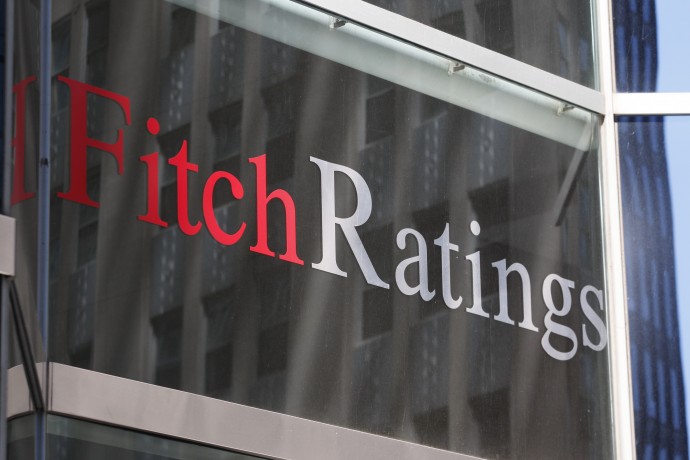FITCH: MONGOLIAN BANKS’ MINING-RELATED GROWTH CONTINUES
Fitch Ratings says in a new report that Mongolian banks’ increased foreign-currency funding raises banks’ risk profiles.
The agency expects lending volumes to pick up again over the next 12-18 months for Mongolia’s banks, due to replenished foreign-currency funding raised offshore. Loan demand should remain adequate in 2013, despite falling commodity prices as a result of lower economic growth in China. Deposits should increase in Q412 and Q113 as economic activity slows during Mongolia’s cold winters. This should in turn support banks’ liquidity and spur loan growth.
Fitch forecasts real GDP to grow by 13.0% in 2012 and 10.0% in 2013. This metric has slowed from 17.3% in 2011 due to softening commodity prices and lower demand for mineral exports, particularly from China. Future growth should benefit once Oyu Tolgoi and Tavan Tolgoi mines start commercial production.
Asset quality pressures will continue to mount, in line with loan growth. Rapid growth in US dollar lending, the majority of it related to mining projects, may naturally hedge banks’ own foreign-currency borrowings. However, borrowers may struggle to repay foreign currency loans if the Mongolian tugrik were to depreciate sharply, unless their operations give them access to US dollars. Fitch views positively that certain banks (eg, Khan Bank LLC, ‘B’/Stable; XacBank LLC, ‘B’/Stable) are targeting their lending at borrowers whose income is largely in foreign currency. The regulatory loan quality indicators for Mongolian banks have improved since 2009 but they lack a forward-looking view, as they are based solely on number of days overdue.
The Mongolian central bank provides banks with an opportunity to swap US dollars into local currency temporarily. Fitch views longer swap tenors positively, as this could lead to a better supply of local-currency loans and hence reduce foreign-currency-related credit risks. Restrictions on foreign-currency lending or eligible borrowers could also help to minimise banks’ vulnerability to a sudden depreciation of the tugrik.
The shift to non-deposit term funding puts pressure on banks’ profits, due to higher funding costs. Additional pressure on banks’ profit and capital stems from higher operating costs and loan growth. Furthermore, non-concessionary term funding introduces refinancing risk as wholesale investors are more market-oriented than multinational and bilateral creditors.
The agency expects lending volumes to pick up again over the next 12-18 months for Mongolia’s banks, due to replenished foreign-currency funding raised offshore. Loan demand should remain adequate in 2013, despite falling commodity prices as a result of lower economic growth in China. Deposits should increase in Q412 and Q113 as economic activity slows during Mongolia’s cold winters. This should in turn support banks’ liquidity and spur loan growth.
Fitch forecasts real GDP to grow by 13.0% in 2012 and 10.0% in 2013. This metric has slowed from 17.3% in 2011 due to softening commodity prices and lower demand for mineral exports, particularly from China. Future growth should benefit once Oyu Tolgoi and Tavan Tolgoi mines start commercial production.
Asset quality pressures will continue to mount, in line with loan growth. Rapid growth in US dollar lending, the majority of it related to mining projects, may naturally hedge banks’ own foreign-currency borrowings. However, borrowers may struggle to repay foreign currency loans if the Mongolian tugrik were to depreciate sharply, unless their operations give them access to US dollars. Fitch views positively that certain banks (eg, Khan Bank LLC, ‘B’/Stable; XacBank LLC, ‘B’/Stable) are targeting their lending at borrowers whose income is largely in foreign currency. The regulatory loan quality indicators for Mongolian banks have improved since 2009 but they lack a forward-looking view, as they are based solely on number of days overdue.
The Mongolian central bank provides banks with an opportunity to swap US dollars into local currency temporarily. Fitch views longer swap tenors positively, as this could lead to a better supply of local-currency loans and hence reduce foreign-currency-related credit risks. Restrictions on foreign-currency lending or eligible borrowers could also help to minimise banks’ vulnerability to a sudden depreciation of the tugrik.
The shift to non-deposit term funding puts pressure on banks’ profits, due to higher funding costs. Additional pressure on banks’ profit and capital stems from higher operating costs and loan growth. Furthermore, non-concessionary term funding introduces refinancing risk as wholesale investors are more market-oriented than multinational and bilateral creditors.

Comments
Post a Comment